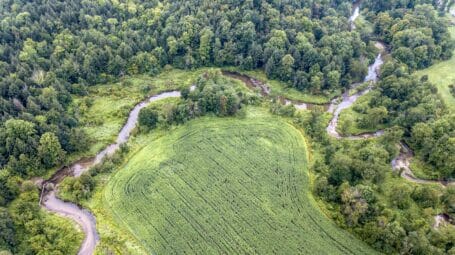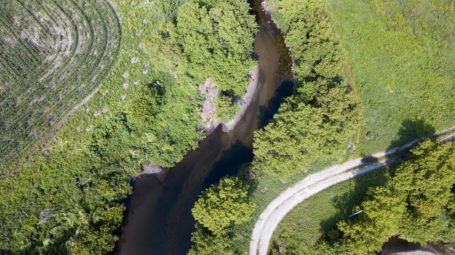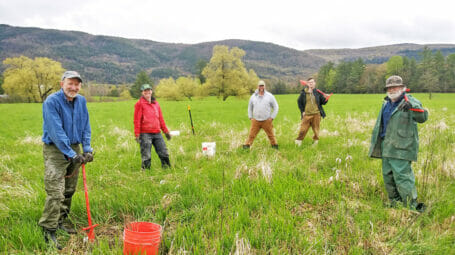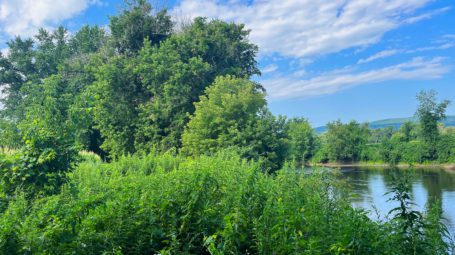Partners join together to improve stream function and wildlife habitat
A high-priority stream that was constrained by an undersized culvert was restored to its natural dimensions after damage in the July 2023 floods. The restoration project will minimize flood damage, protect water quality, and enhance wildlife habitat.
The culvert is located in a tributary of the Andover Branch, which flows into the Williams River and ultimately the Connecticut River. The area was identified as a priority in 2011 after Tropical Storm Irene caused significant damage. The steep hills here can contribute to dramatic flooding, including flash floods, after extreme weather.
During the heavy rains this July, stream waters rose and filled the narrow valley, washing away significant stretches of road. The water carried away the old culvert and large amounts of sediment and other natural material. Fortunately, much of this sediment ended up in a downstream wetland and floodplain forest—natural areas that helped limit further damage to homes and infrastructure.
We assessed this damage, which was on a property that was donated to us, and decided to replace the undersized five-foot-wide culvert with a larger one. We brought together hydrologic design engineers and skilled contractors to work with us on the restoration project.
“We are committed to protecting and restoring the lands we care for,” said VLT Ecologist, Allaire Diamond. “Appropriately sized stream crossings help keep our watersheds healthy, and slow down and hold floodwaters. Our partners responded quickly to support this important project. Nature-based solutions like this can help us prepare for and mitigate the effects of climate change.”
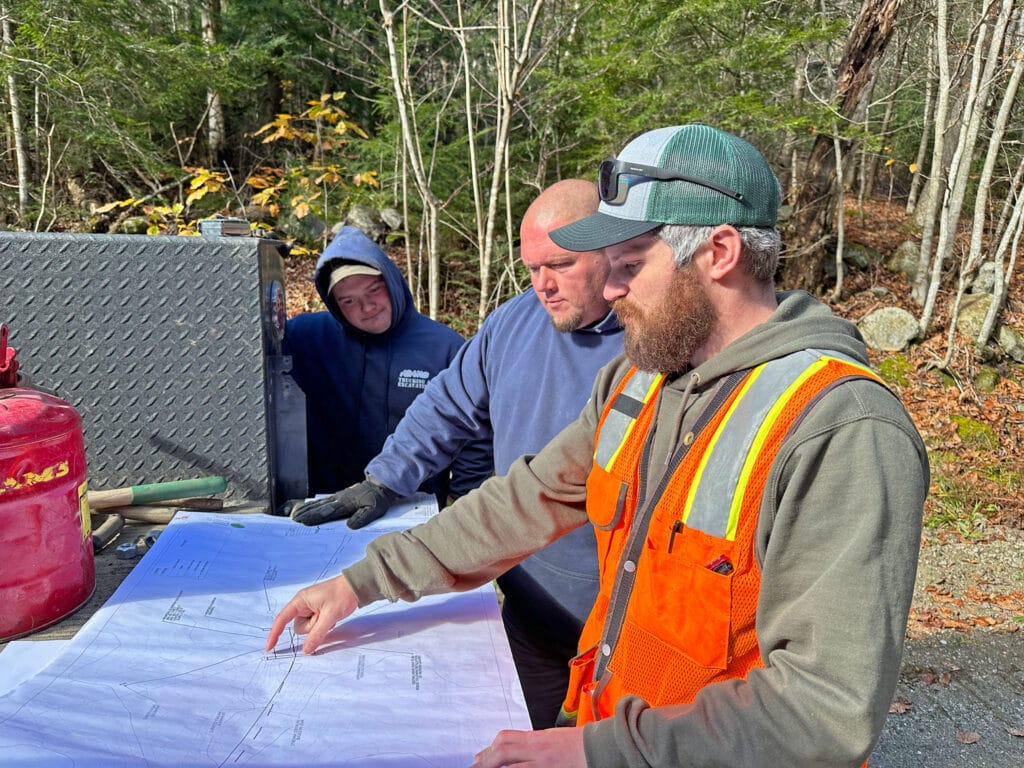
Engineer Jordan Duffy (orange vest) from Fitzgerald Environmental Associates with Aaron Adams and Nick Streeter from Adams Trucking and Excavating look over technical plans for the project
Engineers from Fitzgerald Environmental Associates visited the site in August to take measurements and collect data to design the rebuild. They developed a technical design for a culvert that will safely fit the stream during 100-year flood levels.
Adams Trucking and Excavating undertook the rebuild over two weeks in November. They carefully pumped water from the work area and assembled the new culvert, a ten-foot-wide custom aluminum structure, onsite. They then installed the culvert on concrete blocks and reopened the stream to its natural course.
The new culvert is shaped like an arch with an open bottom, spanning a natural rocky stream bed that supports habitat and the movement of aquatic animals.
“This appropriately sized structure will allow larger [water] flows to pass through,” explained water resource engineer Jordan Duffy from Fitzgerald Environmental Associates, who designed the project, “as well as better passage for fish and other creatures to safely make their way up and down stream.”
During construction, Duffy found native fish including brook trout and slimy sculpin in the stream. He relocated them safely out of the construction area.
The project received support from a 2023 Enhancement Design and Implementation Block Grant from the Vermont Department of Environmental Conservation’s Clean Water Initiative Program, administered by Watersheds United Vermont.

